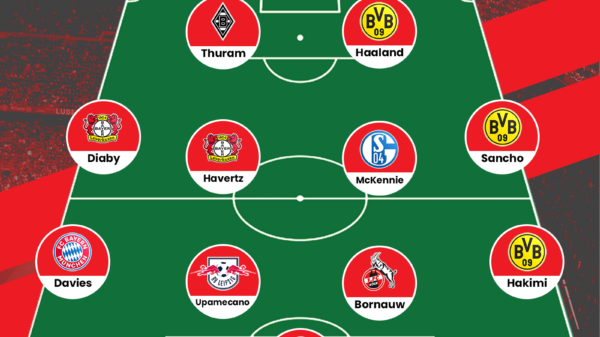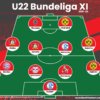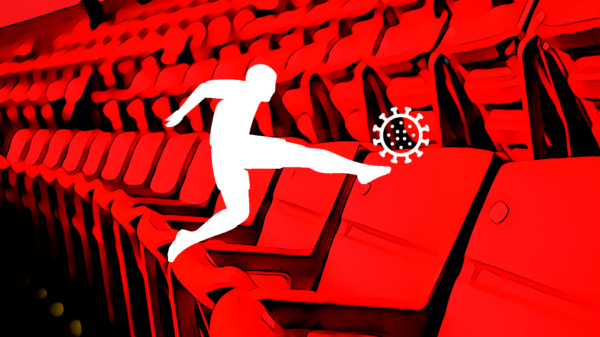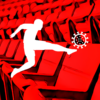Edin Halilovic writes a detailed tactical analysis about the Bundesliga match that ended Bayern Munich 1-1 Hoffenheim.
German champions Bayern Munich welcomed fellow unbeaten Hoffenheim in the league to the Allianz Arena last Saturday with hopes of extending their winning streak in all competitions to five matches as they’ve begun to find their stride under Carlo Ancelotti in recent weeks. Western Europe’s new managerial sensation Julian Nagelsmann and his side had done well this term up until this match to build on last season’s last-gasp league survival, but faced his their toughest challenge yet as they visited the home of Germany’s finest.

Made using TacticalPad
Bayern Munich: 1. Neuer; 13. Rafinha, 17. Boateng, 5. Hummels, 18. Bernat; 6. Alcantara, 14. Alonso, 23. Vidal; 10. Robben, 9. Lewandowski, 11. Costa.
Hoffenheim: 1. Baumann; 25. Sule, 21. Hubner, 22. Yogi; 3. Kaderabek, 6. Rudy, 17. Zuber, 13. Demirbay, 18. Amiri; 27. Kramaric, 14. Wagner.
Hoffenheim’s asymmetry
Nagelsmann continued with the 3-1-4-2 system that he introduced towards the end of September with the main focuses of it being on defensive organization, smart pressurization, and quick counter-attacking football in an attempt to prevent Bayern from playing their normal game and trying to hit them on the break when regaining possession. Nagelsmann likes to play with two forwards who can stretch the opposing defense with their off-the-ball movement and create room for progressive midfielders like Kerem Demirbay and Mustafa Amiri to wander into when Hoffenheim are on the offensive.
Focusing in on their defensive strategy though, Hoffenheim’s plan was straightforward but well executed from the start. The aforementioned midfield duo, partnered by German international Sebastian Rudy, and the forward pairing of Sandro Wagner and Andrej Kramarić set the tone for the way the team played by pushing up high to press Bayern’s defenders in possession. The rest of the team followed suit but not by joining the pressing from the front players, but by tilting their body positions and shifting their defensive block towards the direction the ball was going to form an asymmetrical defensive shape. This allowed them to close down Bayern’s players on the flanks effectively whilst making it difficult for Bayern to play through the middle with the players pressing the defenders on the ball from the front.

Often during the game, when Hoffenheim weren’t in possession and Bayern were in the first phase of their build-up play, Kramarić moved out wide to the left to track the run of Rafinha and support Zuber on that flank who took up a conservative role for much of the game, leaving the wide attacking responsibilities to his opposite number, Pavel Kaderabek. This left the pressing duties on Boateng and Hummels for his strike partner and one of Amiri or Demirbay, who also often alternated between their defensive and pressing duties.
This allowed Hoffenheim to press the two Bayern centerbacks with two front players while Kramarić and Kaderabek tracked the runs of Rafinha and Bernat which, along with Robben and Costa’s diagonal movements infield, denied Bayern any opportunity to establish numerical superiority on the flanks while Hoffenheim also always had their three center-backs and at least three others standing behind the ball in the middle of the park to make it hard for Bayern to play their way through centrally as well.

Hoffenheim’s astute defensive organization and plan worked well to limit Bayern’s creativity throughout the game with most of their biggest offensive talents, in particular Robert Lewandowski who was always outnumbered and kept quiet by the visitors’ central defensive trio and Arjen Robben who was almost always kept a watchful eye on by at least two opposing players. Their defensive block shifts, alternating roles, and cover shadows paid dividends as Bayern struggled to find spaces to play into and created very few chances of note all afternoon.
Bayern’s problems in accessing central areas
It wasn’t just Hoffenheim’s impressive defending and structure that managed to stifle Bayern with their own issues contributing to some of their own undoing themselves. Although the wide players found it difficult to receive the ball in pockets of space due to Hoffenheim’s doubling up on the flanks, there were evident spaces to play through the middle but because of Bayern’s poor spacing and midfield structure, they were unable to take advantage of it.
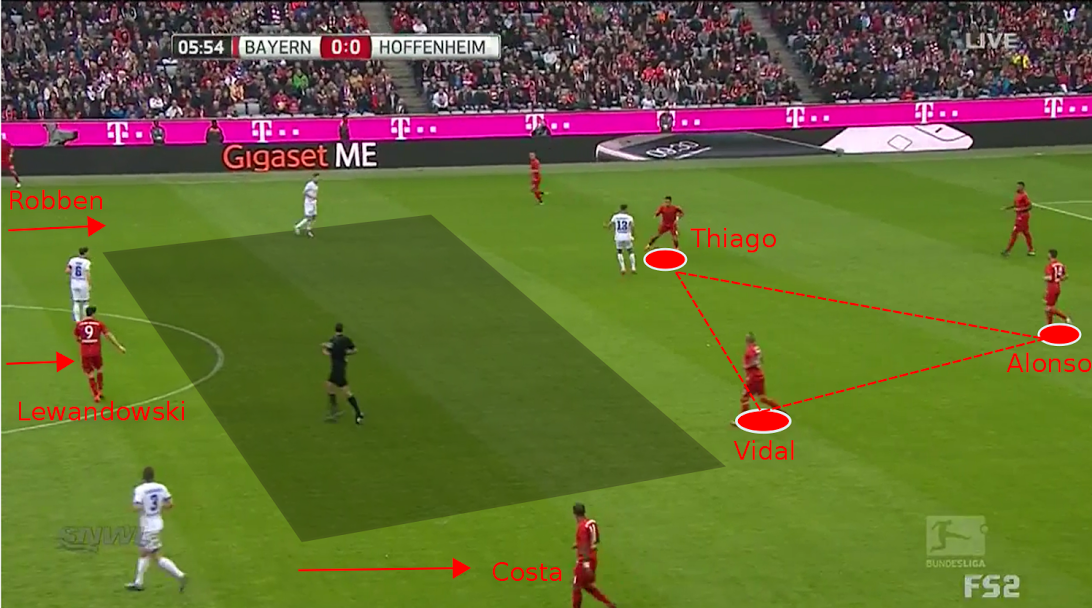
In the first half, there were times when the team was occupying positions very deep within their own half such as in the image above which made it easy for Hoffenheim to pin back and defend against while making Bayern’s own job of progressing plays into advanced areas harder than it needed to be. With the center-backs operating in a deeper defensive line and Alonso playing in close proximity to them, Thiago and Vidal often had to drop a lot deeper to receive the ball and carry the ball forward with Bayern’s problems in the first phase of build-up play all too evident in these situations.
The deep positioning of the midfield trio created a considerable disconnect between them and the front three players who moved backwards in order to get closer to the ball themselves, but with Hoffenheim adjusting their own defensive line to push further and Bayern back into their own defensive zone, this didn’t prove to be an effective way for Bayern to escape their pressure and only made it tougher on themselves to play through it.

Bayern didn’t take long to realize that the structure of their team in the build-up phase wasn’t going to be successful against Hoffenheim’s energetic approach so they adjusted by trying to build their plays through the flanks and playing diagonal balls out wide to their fullbacks. Depending on which side the ball was played out to, the winger closest to that flank would move back out wide to support the fullback in possession while the other moved further infield almost as a #10 to improve the team’s positional set-up in midfield.
However, due to reasons mentioned earlier, this strategy did not work either as once the ball reached one of the fullbacks, they were left with no close-by or forward options to play a short ball to with Hoffenheim immediately shifting towards the direction of the ball and closing down the spaces on the sides through high pressing and cover shadows. This left the players who received the ball out wide with little option but to either play a long ball forward and risk losing possession or to play it backwards and start the build-up over again. Whenever they tried to force the play forward in those areas, they ended up losing the ball quite a lot in the early stages of the game as Hoffenheim forced many turnovers and created a few dangerous counters from those gained possessions.

Bayern, particularly their midfield maestro and main creator Thiago, had to try and switch the play often over to the opposite flank of Hoffenheim’s shifted defensive block where they were underloaded as a means of trying to progress their plays and find solutions that they were otherwise struggling to come up with. Although they still lacked access to the central areas of the pitch due to their poor spacing, they were able to find more room to maneuver in by switching the play often and trying to build connections between the wide players whose quick combinational plays were the main offensive threats of Bayern’s that Hoffenheim had to deal with all game long.

Simply put, Bayern relied a lot more on individuality to construct meaningful attacks because of their poor midfield structure, although it didn’t have to be this way. A solution for them to find more success going forward could have been to position more players inside Hoffenheim’s block and offer themselves as passing options in between the lines. Although Hoffenheim’s defending of the wide areas where they were numerically superior was impressive, they lacked vertical compactness in midfield where they short-handed because of the constant wide and forward movement of their central midfielders.
Bayern did find moderate success this way mainly through Hummels’ vertical passing and Robben’s diagonal movements into the center as they broke Hoffenheim’s midfield at times, but surprisingly didn’t attempt to look for more answers down this route as they preferred to focus their efforts on attacking down the flanks.
Bayern’s offensive variations and wing-oriented attacks
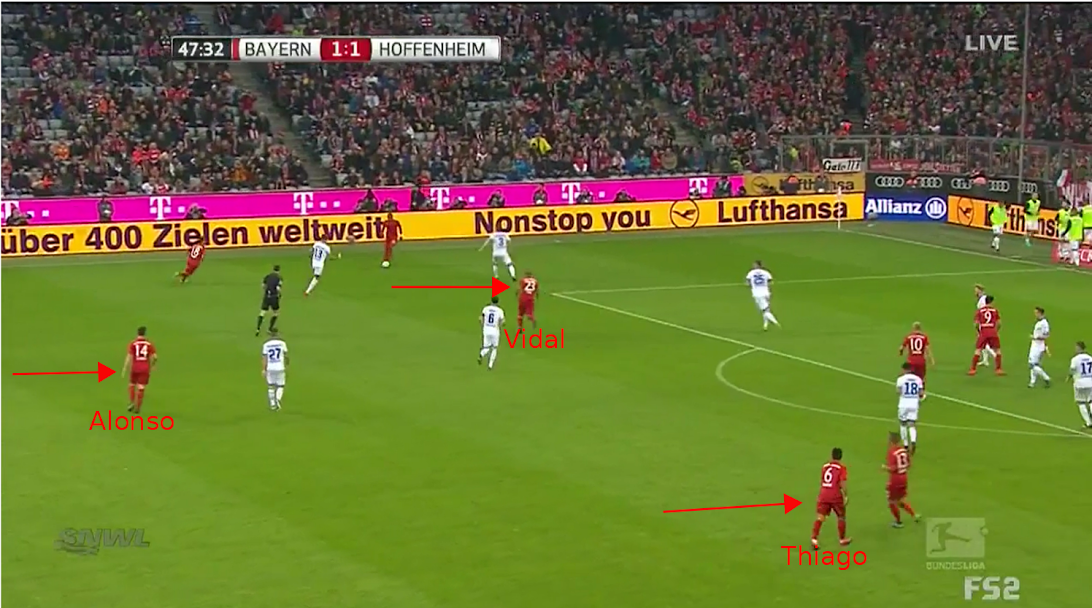
In the second half, it was immediately noticeable that Bayern were more willing to commit men forward as straight away Thiago and Vidal overlapped into advanced positions and joined the forward players in an attempt to create Bayern’s numbers in attack as a means of breaking down the Hoffenheim rearguard more effectively. This, along with the adjustment of their defensive line which moved up to almost the halfway line, allowed Bayern to pin Hoffenheim back to defending horizontally across the outside of their own penalty area as Die Roten tried to create an attacking onslaught in the second 45 minutes of the game.

While they had already utilized the wide players quite frequently in the first half, Bayern full on adopted a wing-oriented attacking strategy in the second with most of the forward passes directed diagonally to the players on the flanks. As the midfield players moved forward, it came down to mainly attacking in the wide channels as Bayern attempted cross after cross into the box to try and score, but ultimately to no avail.
Conclusion
Hoffenheim’s energy levels clearly dropped as the game wore on and were restricted to just defending what they had achieved in the first half for most of the second, but stood firm and managed to hold on for a solid point at the home of the champions. The result keeps them unbeaten and within four points of first place in the Bundesliga while for Bayern, a third draw in the league leaves them top of the standings although it keeps them tied to the rest of the pack in what’s shaping up to be a competitive season so far in Germany.
Read all our Tactical Analyses here.
- Tactical Analysis: Athletic Bilbao 2-2 Atletico Madrid | All square at San Mames - February 3, 2017
- Scout Report: Gabriel Jesus | Manchester City’s new Brazilian starlet - January 5, 2017
- Tactical Analysis: Bayern Munich 1-1 Hoffenheim | Sinsheim club remain unbeaten - November 15, 2016





















































